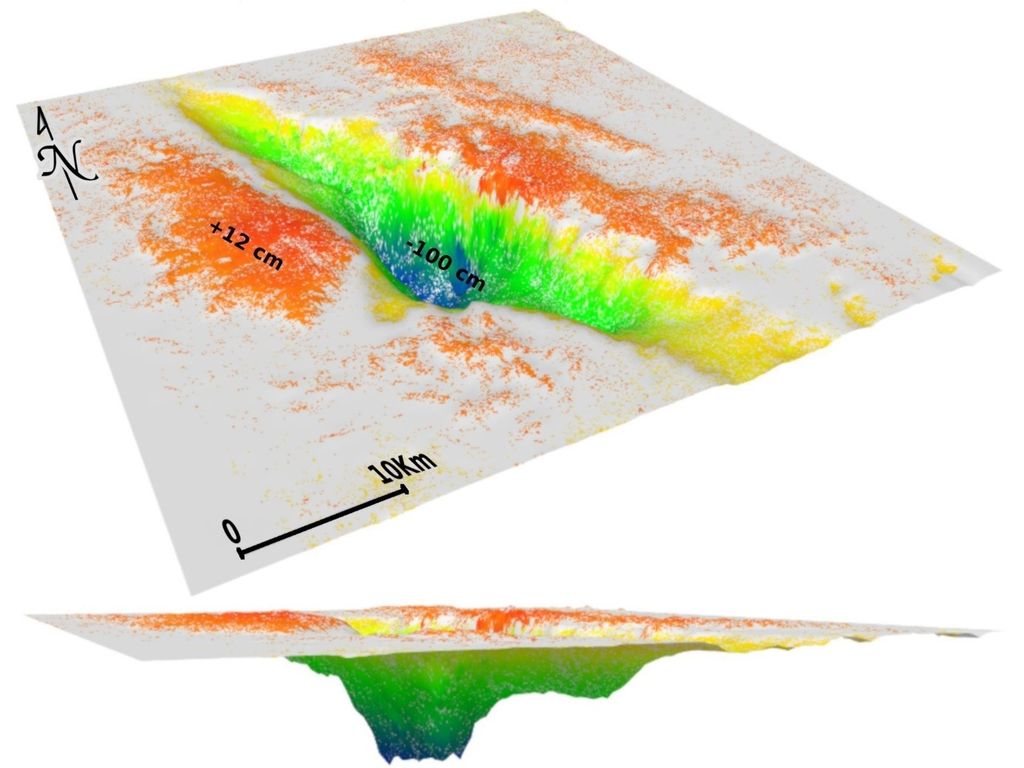
Earthquakes in Central Italy: Where is the Ghost Volume?
The seismic sequence started in central Italy on August 24, 2016 is linked to the extension that involves the Apennines and is measured by the GPS network. Thanks to new satellite technologies it was possible to measure how the earthquake caused the lowering of a volume of earth's crust at least 7 times greater than that raised. The results were published in the journal Scientific Reports.
Earth observation satellites have been studying seismic events for about twenty years. In particular, those that equip a RADAR sensor, the SAR (Synthetic Aperture Radar), are used to accurately measure earthquake-induced earth surface deformations.
"The SAR interferometry - explains Emanuela Valerio, researcher at Sapienza University - has allowed us to extract the information about the distance that each point on the ground (the pixel of images) has in relation to the SAR, thus allowing the measurement of the variations occurred in the area "Photographed" by the satellite after the earthquake. It was thus possible to calculate the lowering and raising movements of the soil and the relative volumes of rock mobilized by the seismic events that occurred on August 24, 2016, of magnitude 6, and on October 30, 2016, of magnitude 6.5 ".
The results obtained lead to a very important question: where does this excess crustal mass go in depth? The model predicts that in the preparatory phase of the earthquake, which can last a few hundred years, several thousand microfractures are formed in the fragile crust (the first 10-15 km) linked to the extension in progress along the Apennine chain. A "dilated" volume is then created which having reached a limit state in which it is no longer able to support the weight of the overlying rocks, collapses like the closing of an accordion.
"In particular, thanks to these data - adds Carlo Doglioni, from the Department of Earth Sciences and President Ingv - the relationship between subsidence rock volume and uplift volume was evaluated, throwing new light and confirmation on the role of gravity in earthquakes related to extensional faults. Our next goal is the hunt for crustal volumes in which along the Apennines there are dilated areas, ready to generate a future seismic event ".
References:
Volume unbalance on the 2016 Amatrice - Norcia (Central Italy) seismic sequence and insights on normal fault earthquake mechanism - Bignami, C., Valerio, E., Carminati, E., Doglioni, C., Tizzani, P., & Lanari, R. Scientific Reports-Nature 2019. DOI: 1038/s41598-019-40958-z
Further Information
Carlo Doglioni
Department of Earth Sciences, Sapienza University of Rome
T (+39) 06 4991 4549
carlo.doglioni@uniroma1.it
Eugenio Carminati
Department of Earth Sciences, Sapienza University of Rome
T (+39) 06 4991 4950
eugenio.carminati@uniroma1.it
Emanuela Valerio
Department of Earth Sciences, Sapienza University of Rome
T (+39) 06 4991 4156
emanuela.valerio@uniroma1.it
